Wales
If you ask me what should the capital of Wales be, then my answer is Caernarfon. While most of South Wales had been conquered by the English, the Welsh resistance remained strong in the North. Protected by the mountains of Snowdonia, the Welsh, which excelled in guerrilla warfare, had a territorial advantage against the English who preferred open warfare.
This strong Welsh resistance can still be seen today as North Wales still retain the Welsh language and culture much more strongly than South Wales. By the 13th century, the principality of Gwynedd became the most dominant power in Wales, and the prince of Gwynedd wore the title "Prince of Wales".
Anglo-Wales relation declined when Llywelyn ap Gruffudd, the Prince of Wales, refused to do homage to Edward I. This was seen by Edward as a violation to the Treaty of Montgomery which was signed by Henry III to acknowledge the right of the Prince of Wales. Furthermore, Llywelyn planned to marry the daughter of Simon de Montfort, the leader of the rebellion in the Second Barons' War.
Edward I declared war on Llywelyn, and he brought an army of a size 10x more than the army that he brought for the Crusade. The Welsh stood no chance, and Llywelyn ap Gruffudd, the last native Prince of Wales, was killed.
After a successful Conquest of Wales, Edward I embarked on a project to build castles and walled towns to surround North Wales. These fortifications come to be known as the Ring of Iron, and they were meant to subdue and subjugate the Welsh under English rule. The Ring of Iron is considered to be the finest example of medieval military architecture in Europe, and is thus a UNESCO World Heritage Site. In the heart of this Ring of Iron is the mightiest and perhaps the most powerful castle that has ever been built, Caernarfon Castle.
Caernarfon Castle
The Ring of Iron was meant to be a symbol of English might in the heart of Wales. The castles were marks of Edward's conquest of Wales, and the deepest mark of English power was built in Caernarfon. Caernarfon Castle was designed to intimidate and it was a castle like nothing the world has ever seen before.
Edward I employed the best military architect in Europe, James of St George, to construct an impregnable castle. This masterpiece of a castle was apparent as I arrived at the front gate. The King's Gate was designed to be siege-proof, five gates equipped with murder holes and arrowslits.
The walls of Caernarfon Castle was inspired by the Walls of Constantinople, and eight octagonal towers. It was a true masterpiece in defence as well as a powerful statement to the Wales: that the castle is invincible.
Sebastian Pratama
8 chapters
1 Oct 2023
Caernarfon
September 30, 2023
If you ask me what should the capital of Wales be, then my answer is Caernarfon. While most of South Wales had been conquered by the English, the Welsh resistance remained strong in the North. Protected by the mountains of Snowdonia, the Welsh, which excelled in guerrilla warfare, had a territorial advantage against the English who preferred open warfare.
This strong Welsh resistance can still be seen today as North Wales still retain the Welsh language and culture much more strongly than South Wales. By the 13th century, the principality of Gwynedd became the most dominant power in Wales, and the prince of Gwynedd wore the title "Prince of Wales".
Anglo-Wales relation declined when Llywelyn ap Gruffudd, the Prince of Wales, refused to do homage to Edward I. This was seen by Edward as a violation to the Treaty of Montgomery which was signed by Henry III to acknowledge the right of the Prince of Wales. Furthermore, Llywelyn planned to marry the daughter of Simon de Montfort, the leader of the rebellion in the Second Barons' War.
Edward I declared war on Llywelyn, and he brought an army of a size 10x more than the army that he brought for the Crusade. The Welsh stood no chance, and Llywelyn ap Gruffudd, the last native Prince of Wales, was killed.
After a successful Conquest of Wales, Edward I embarked on a project to build castles and walled towns to surround North Wales. These fortifications come to be known as the Ring of Iron, and they were meant to subdue and subjugate the Welsh under English rule. The Ring of Iron is considered to be the finest example of medieval military architecture in Europe, and is thus a UNESCO World Heritage Site. In the heart of this Ring of Iron is the mightiest and perhaps the most powerful castle that has ever been built, Caernarfon Castle.
Caernarfon Castle
The Ring of Iron was meant to be a symbol of English might in the heart of Wales. The castles were marks of Edward's conquest of Wales, and the deepest mark of English power was built in Caernarfon. Caernarfon Castle was designed to intimidate and it was a castle like nothing the world has ever seen before.
Edward I employed the best military architect in Europe, James of St George, to construct an impregnable castle. This masterpiece of a castle was apparent as I arrived at the front gate. The King's Gate was designed to be siege-proof, five gates equipped with murder holes and arrowslits.
The walls of Caernarfon Castle was inspired by the Walls of Constantinople, and eight octagonal towers. It was a true masterpiece in defence as well as a powerful statement to the Wales: that the castle is invincible.

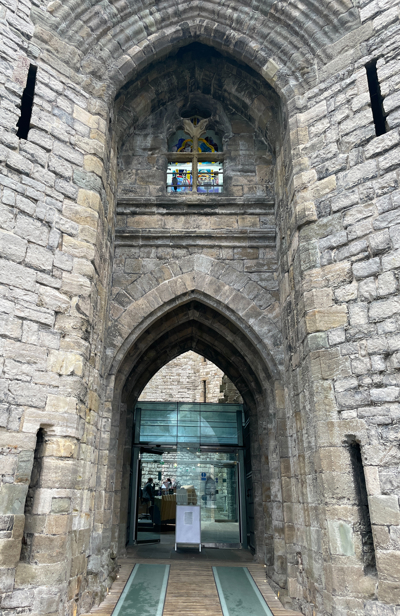
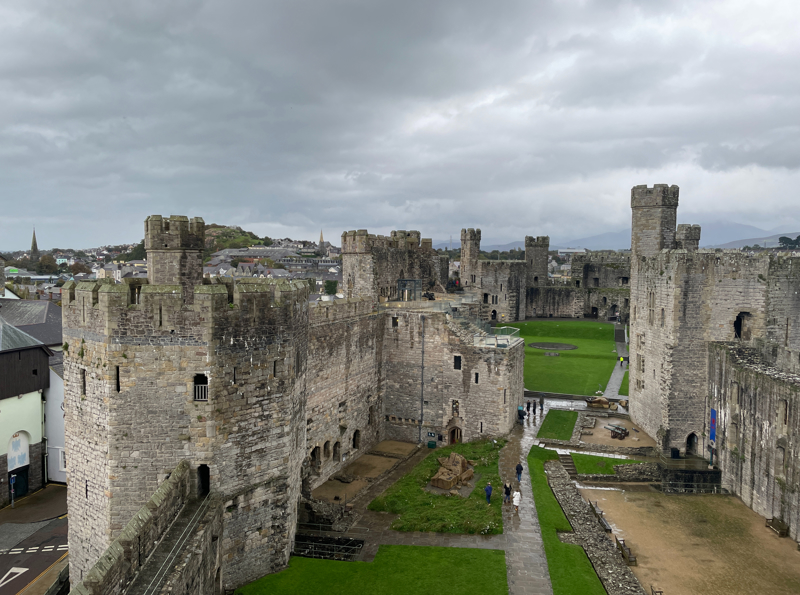

One of the best towers of Caernarfon Castle is the Eagle Tower. The Eagle Tower is the mightiest tower in the castle, and it is beautifully decorated with three turrets. This design was probably inspired by Edward's queen, Eleanor of Castile, as the Castilian seal was a polygonal tower with three turrets.
Water for the castle was drawn from the neighbouring Well Tower. The inside of the Well Tower for me looks like it comes from a movie on medieval castle and dungeon, except that it is actually real.
While the castle was designed as a defensive fortress, it was also meant to be a royal palace. Edward I intended for Caernarfon to be the centre of royal government in Wales, and that is why he built his most magnificent castle here. The castle has polygonal walls instead of round walls, which is typical of the other Edwardian castles. This was likely meant to represent Constantinople, and the use of the symbols of Byzantine Empire was an assertion of English royal authority.
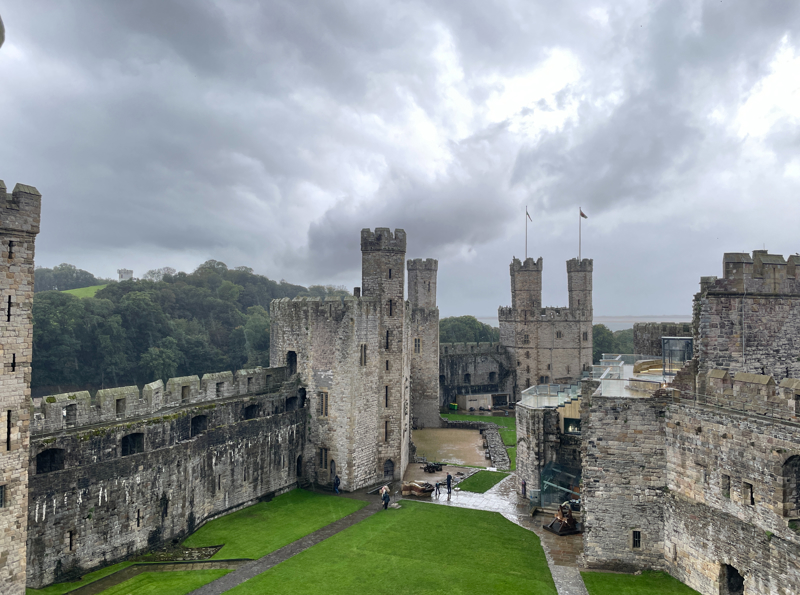
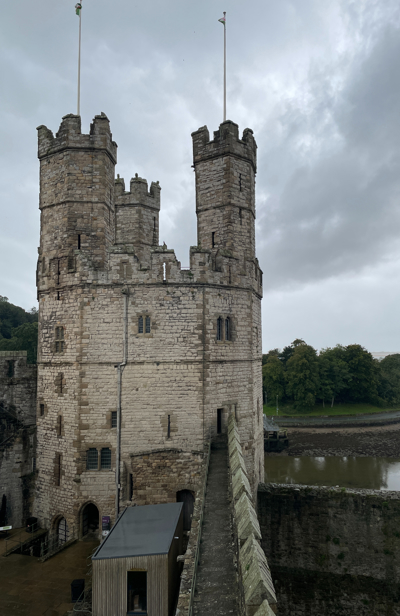


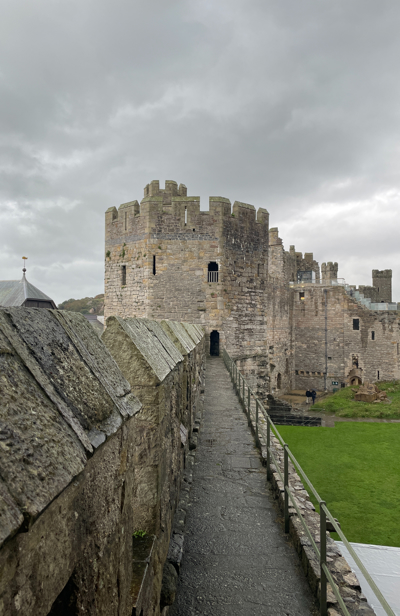
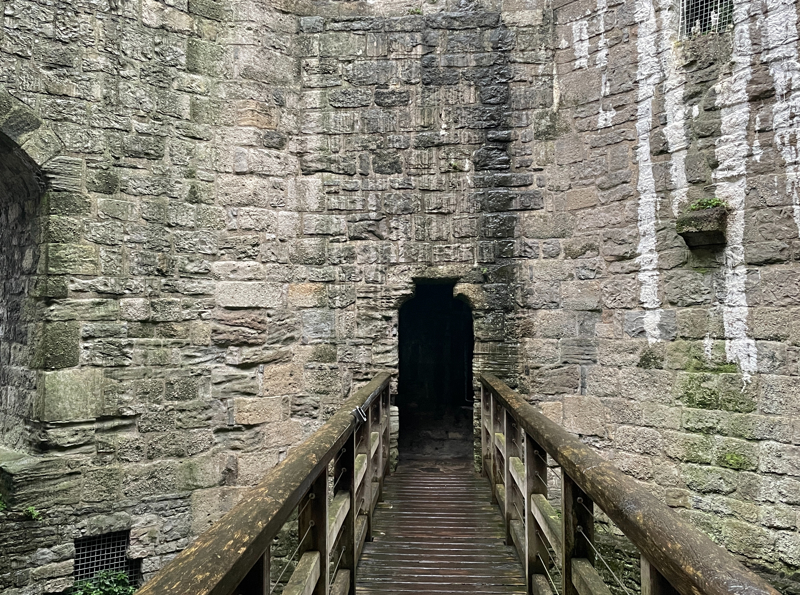

Edward I promised the Welsh that he would give them a Prince of Wales from one of their own, so he also intentionally had Eleanor to give birth to their son in Caernarfon Castle, thus delivering to the Welsh people an English prince that was born in Wales. Edward I thus presented his own son, Edward of Caernarfon, a prince born in Wales who did not speak any English, as the Prince of Wales.
Until the present day, the heir to the English throne have been given the title of the Prince of Wales. This links the Royal Family to Caernarfon, making it a Royal Town. It was a clever manoeuver by Edward I to take the title of Welsh nobility and bring it under the English Crown. Caernarfon Castle was still used as the place of investiture of Charles III as the Prince of Wales in 1969.
Caernarfon Castle is thus often viewed as the symbol of English occupation in Wales. This made it a major target during the Welsh rebellion led by Owain Glyndwr. Claiming to be the real Prince of Wales, Glyndwr faced the mighty walls of Caernarfon Castle.

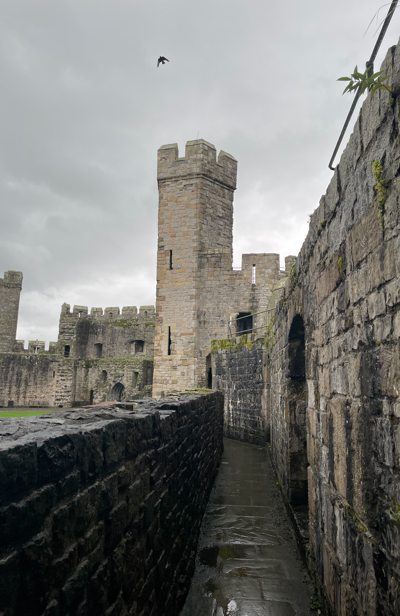
The threat of Owain Glyndwr became more serious when the French came to support him. The French provided the latest siege engine technologies to help the Welsh. However, Caernarfon Castle was designed to be siege-proof. Its gates resisted battering rams, the walls were unscalable, and the castle withstood the joint Welsh-French attack with only 28 men defending it.
The walls of the castle were equipped with arrowslits and passages that allow the defenders to move between tower to tower quickly and undetected by the enemy. The arrowslits enabled the defenders a wide viewpoint from which they could shoot the attackers from the safety of the walls. Caernarfon Castle resisted the siege, and the rebellion was squashed.
When the Tudors rose to the English throne, the hostility between England and Wales ceased, as the Tudors were Welsh in origin. As a result, the role of Caernarfon Castle diminished and it became neglected. Even in ruins, the castle is still magnificent.

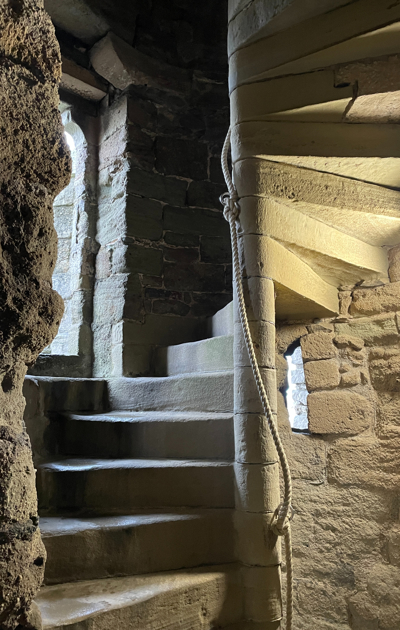
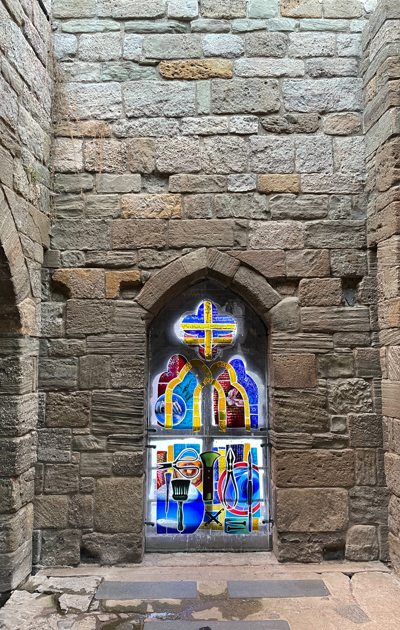

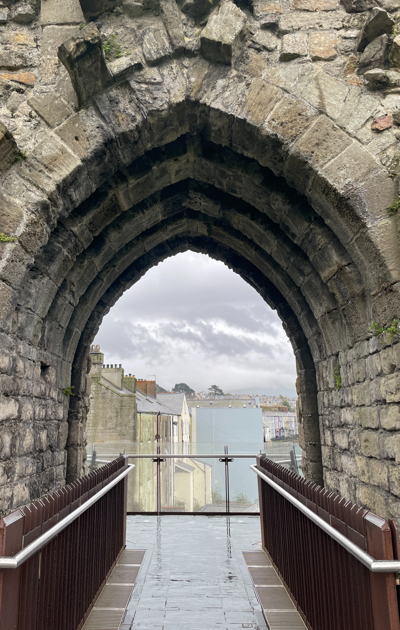

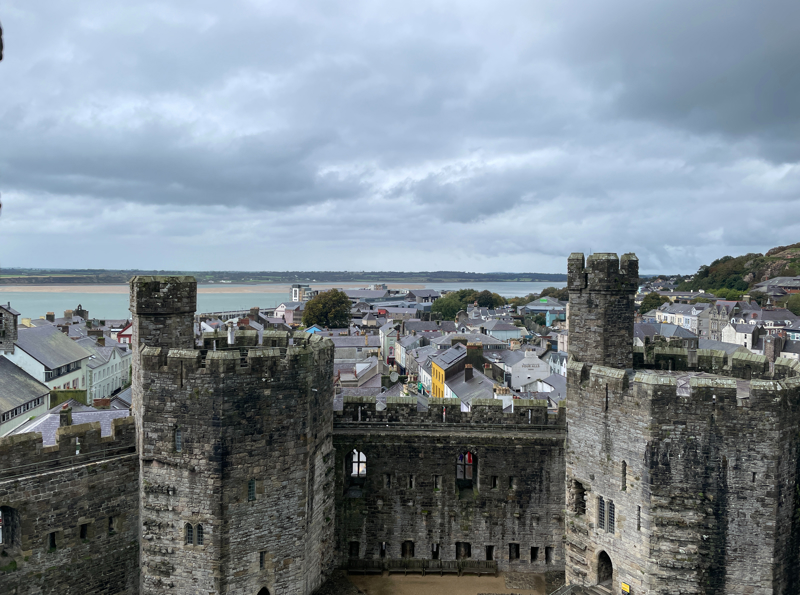
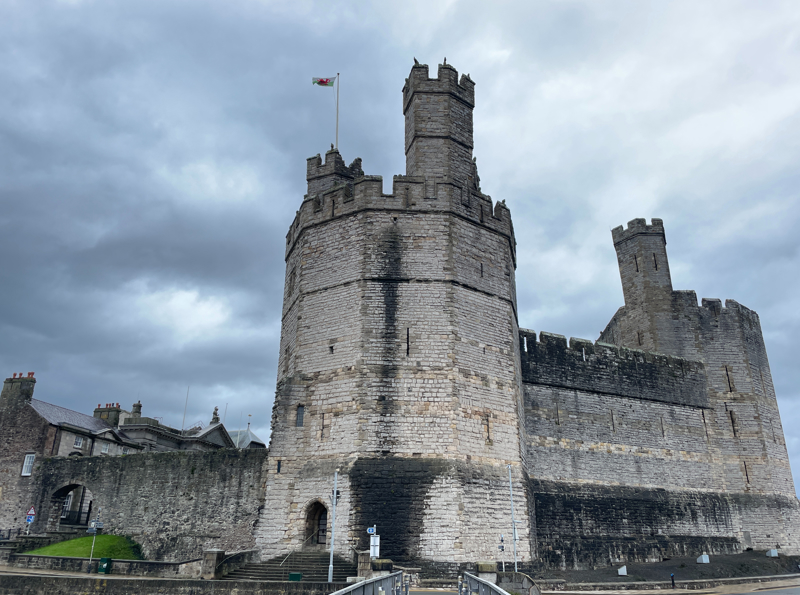
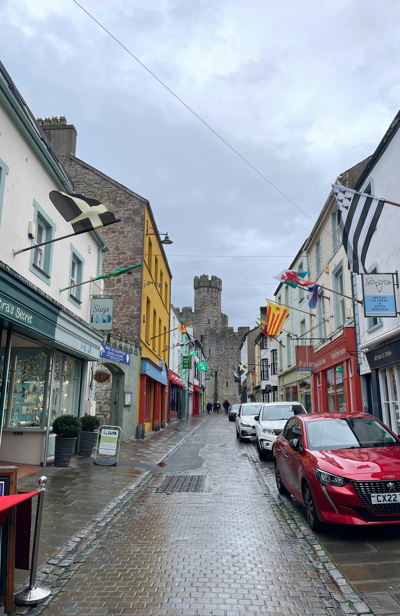
I feel that Caernarfon is the most Welsh town in Wales, and due to its history, it deserves to be a centre of Welsh culture and politics. Its Welshness is apparent from the way the locals in Caernarfon speak Welsh. You will not hear Welsh being spoken very often in Cardiff. In fact, Caernarfon was a contender for the Welsh capital, but eventually, Cardiff won the vote.
Caernarfon is the main destination to visit in Wales, however, visiting it may not be straightforward. There is no direct train to the town. I had to go to Bangor and took a local bus to Caernarfon. The train journey from South Wales to North Wales, and the return journey, were horrendous. The trains were delayed and cancelled in the middle of the route for various reasons. It took me 9 hours from Cardiff to reach Caernarfon. It was not a pleasant journey. Not to mention that the buses are not that punctual or frequent either, which added to my journey time.
It is such a shame that the Royal Town of Caernarfon, the centre of Welsh history, is hidden away by the lack of a decent public transport.
Share your travel adventures like this!
Create your own travel blog in one step
Share with friends and family to follow your journey
Easy set up, no technical knowledge needed and unlimited storage!